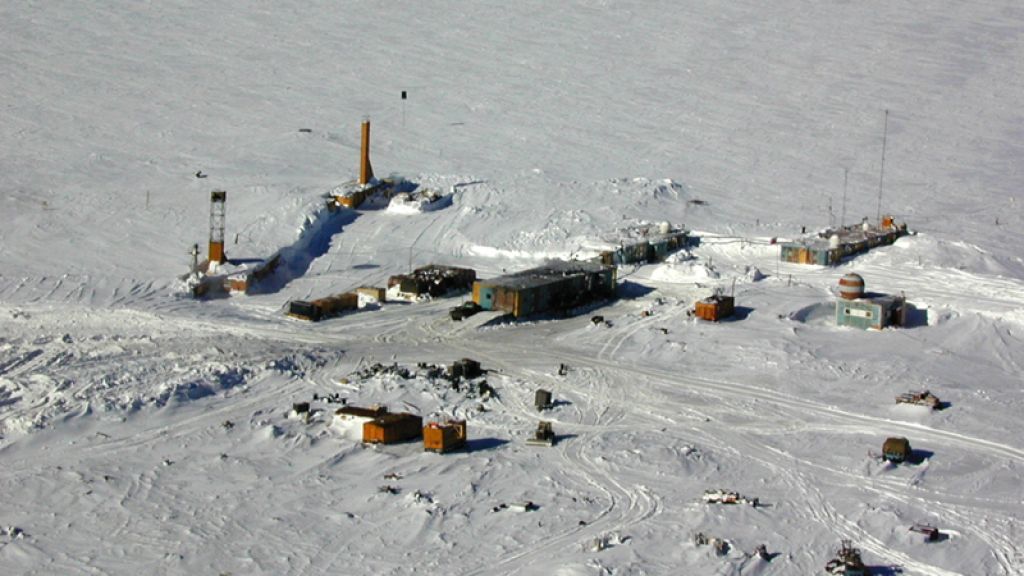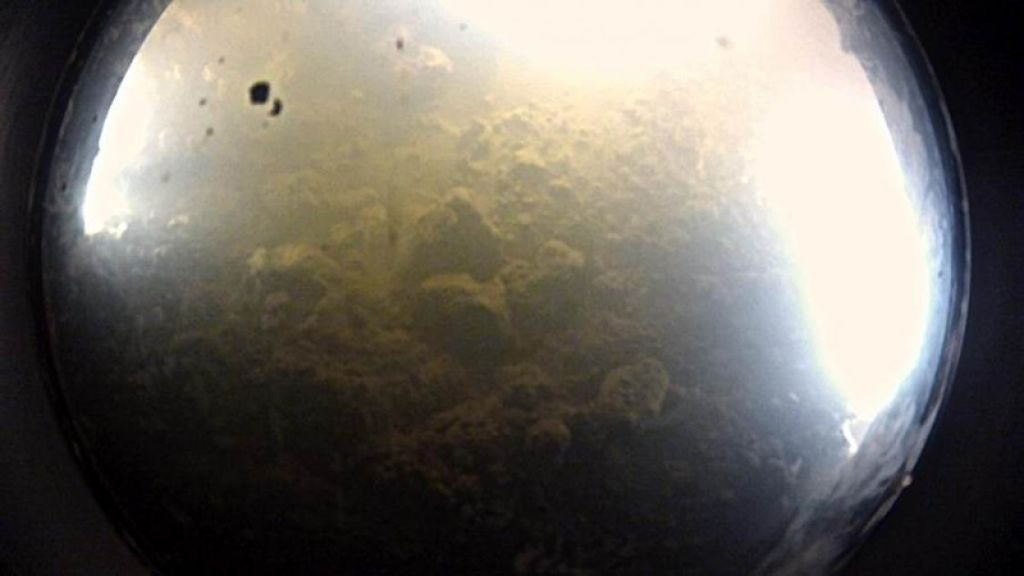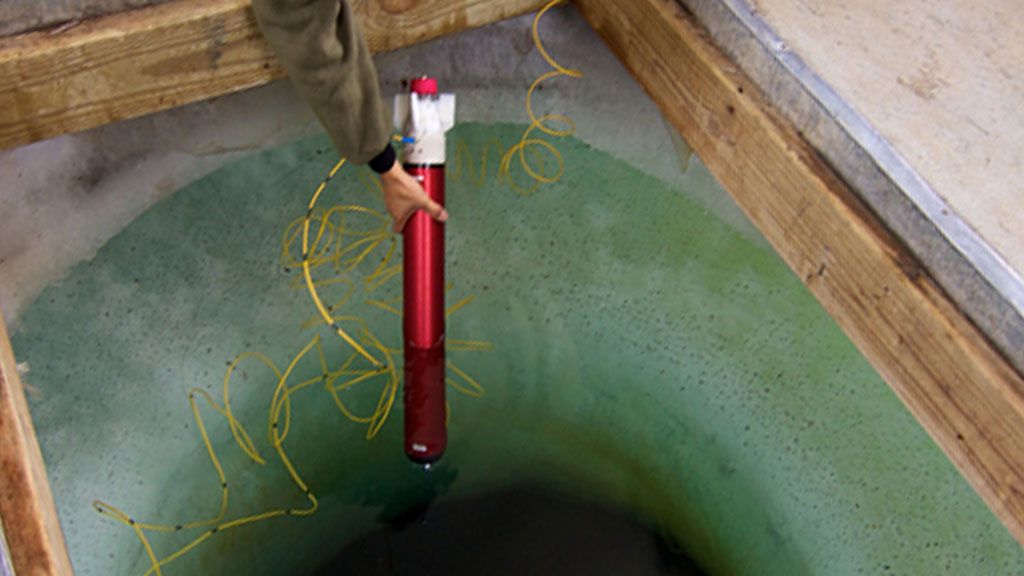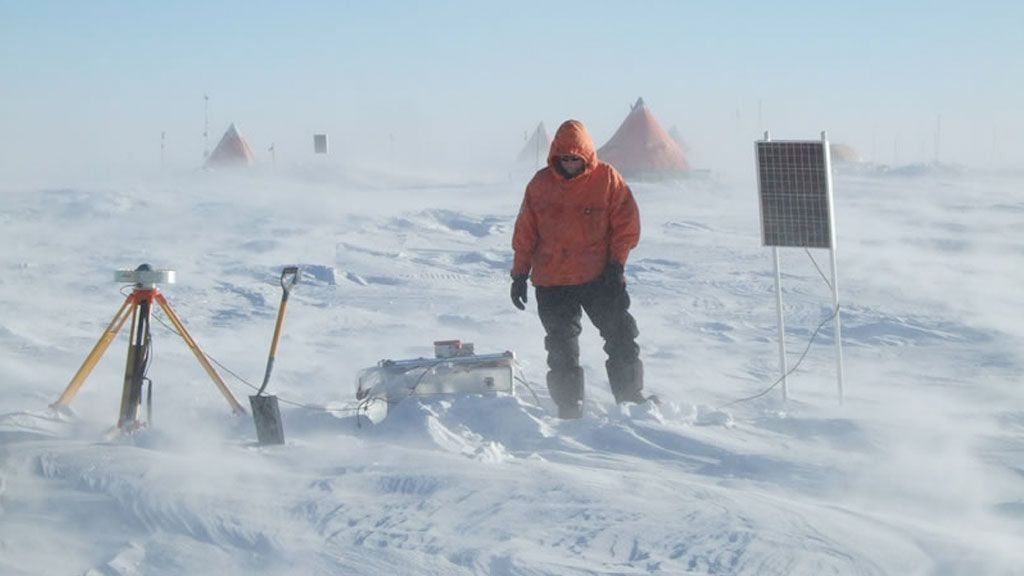Seeking answers beneath the ice: Antarctica’s subglacial lakes
Vostok Station: Lake Vostok, one of the many Antarctic subglacial lakes is some 2.2 miles beneath the ice
© Nicolle Rager-Fuller / NSF
SciencePoles recently interviewed Dr. Cynan Ellis Evans of the British Antarctic Survey (BAS) on the subject of Antarctic sub-glacial lakes. As a biogeochemist specializing in Polar lake environments, Dr Ellis-Evans was a founding member of the International steering committee for the Sub-glacial Antarctic Lake Exploration (SALE) research programme. Amongst other his various responsibilities, he is Head of the BAS Programme Office tasked with supporting and helping to coordinate BAS science, and is senior advisor to the International Programme Office of the International Polar Year (IPY) 2007-2008.
What is an Antarctic sub-glacial lake?
Sub-glacial lakes are large bodies of water that accumulate beneath the vast ice sheet of Antarctica.
Heat is continually being emitted from the Earth's core, but beneath the Antarctic ice sheet it cannot escape because the ice cover acts as a 4 km thick "insulating blanket", trapping the heat. Whilst the top surface of the ice sheet may be -50 degrees centigrade the base can reach a temperature of about -2 to -3 degrees centigrade. The enormous pressure exerted by the weight of the ice sheet causes the melting point of ice to drop below 0 degrees centigrade and where there is a suitable rock basin the melt water can accumulate.
Why do sub-glacial lakes matter? Why are you researching these lakes and what do you hope to find there?
Originally, scientists imagined that the underside of the ice sheet would only have thin layers of water: maybe a few meters of depth at most. But in 1995, when they discovered the massive subglacial lake Vostok in Antarctica, they realized that enormous bodies of water could accumulate in places. Lake Vostok is one of the top twenty largest lakes on the planet and even the smallest subglacial lakes tend to be several kilometers in length. It has been calculated that Lake Vostok is at least half to one million years old, and if so it is an environment which has never been exposed to the effects of Man. Indeed it has been hypothesized that some of these lakes may be many millions of years old and in a few cases the rock basins might even predate the Antarctic ice sheet itself, which formed about 33 to 34 million years ago. These basins could have held a pre-glaciation lake that was ultimately overwhelmed by the advancing ice sheets. Sediments accumulate in lakes over time and there is a small possibility that if we took a core through the sediments we could encounter pre-glaciation sediments at the base. A more likely scenario is that only subglacial sediments will be found but these could still yield a valuable record of the history of the lake and its overlying ice sheet.
Of course, the other question that arises as a result of the prolonged isolation of the lakes is whether life exists in these lakes as such life would have evolved in isolation and might include unique organisms. Our experience of other extreme environments elsewhere on Earth tells us that at least microbial life can develop more or less anywhere and we already have tantalizing indications that bacteria and viruses are present in these subglacial lake environments. These organisms could feasibly provide insights to how life first evolved on Earth and on how life has survived major global cooling events in geological history (the Snowball Earth scenario). Organisms from extreme environments also often produce organic compounds that can have industrial, medical or agricultural application so again subglacial organisms may be of great interest.
Antarctica is often used by researchers interested in life on other worlds as it has features somewhat similar to those present on other planetary bodies such as Mars or the moons of Jupiter. If you look at Europa, one of these Jovian moons, you will find that it is ice covered, but the ice (many kilometers thick) is thought to have an ocean under it. This situation is not so different from what we have at subglacial Lake Vostok. So organizations such as NASA are interested in using subglacial lakes as a test bed for understanding possible extra-planetary life and field testing possible enabling technologies.
As you can see, there are a lot of reasons for studying these systems, both physical and biological.
So you are saying that there are two types of sub-glacial lakes: Those that existed before the ice sheet formed, and those that came about after the ice sheet was in place?
Not exactly, as all subglacial lakes have formed after the ice sheet developed. Most of these lakes appear to have formed in relatively small irregularities in the geological landscape beneath the ice sheet In many cases these will be ice-dammed and so may drain and reform at various times. A number of such draining/refilling events have been recorded in recent times. Such lakes may in many cases be relatively young and in the absence of an ice sheet many of these lakes would not exist.
A very few of the 140+ lakes already found have formed in a more substantial basin that, in some cases, may predate the ice sheet and that basin could possibly have contained a pre-glacation lake. These larger basins are tectonically influenced (are subject to major geological processes) and probably contain the most ancient lakes, such as Lake Vostok. If the ice sheet were not present such basins would nevertheless likely contain a lake.
In the last year or so, we have found evidence that there is a large amount of water moving around under vast areas of the Antarctic ice sheet through what is essentially There is also a SALE-IPY project within the IPY.
So in the end, thanks in part to the IPY, what started as studying sub-glacial lakes will end up giving us a much broader understanding of Antarctica as a whole.

Cynan Ellis Evans
Dr Cynan Ellis-Evans is head of the UK Natural Environment Research Council (NERC) Arctic Office. He also is the science coordinator for NERC's Arctic Research Programme for 2011-2016. During 25 years, he led research groups at the British Antarctic Survey (BAS), undertaking field research, particularly on ice-covered lakes in the Arctic and Antarctic.





